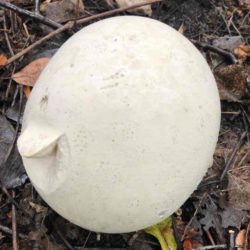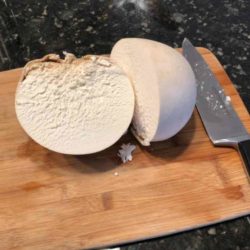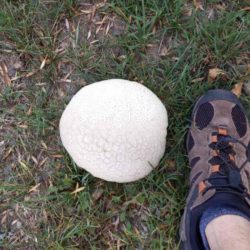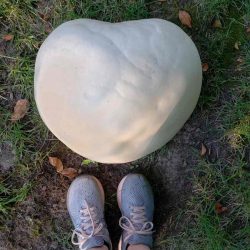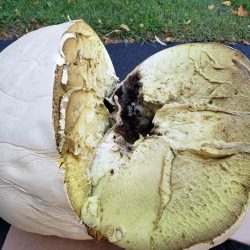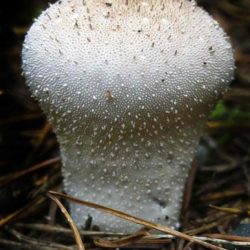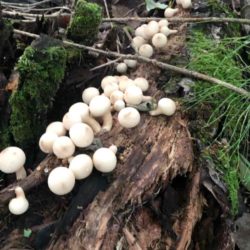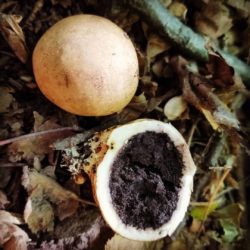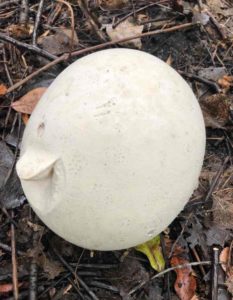
Giant Puffball
Calvatia gigantea
AKA: Giants
Description:
Giant puffballs are very unique and very easy to identify. Discovering a fresh specimen is the tricky part. Puffballs will easily grow to 12 inches, and often much larger! They look like a big white soccer ball, usually sitting out in more open areas. Minimal to no stalk present. When cut in half, to be considered fresh and edible, the inside must be pure white and spongy soft. If discolored at all, it is past its prime and has started to spore. You may also see an outline within that resembles a mushroom. If it goes to spore, then a puffball can go from delicious to dangerous.
Coolness Factor:
While most giant puffballs are more around the 10-20 inch range, it is not uncommon to find a 30, or even 40 inch puffball! A mature giant puffball can hold, and release, trillions of spores!
Where Found:
Often found in more open, grassy areas rather than around trees like most other mushrooms. Generally late summer to early fall.
Tips:
Get out of the trees for once and walk more open areas such as fields, trails and edges and you are bound to stumble on a puffball eventually! Even better, they often grow near each other, sometimes even in fairy rings, so if you find one, look around for others! Always cut a giant puffball open prior to cooking to ensure freshness and edibility!
Cleaning
Once proper ID has been verified and specimen is deemed fresh, start by cutting the small stem area off and then peeling the outer “skin” of the puffball. Once this layer is removed, cleaning should be non-existent! Cutting into slices or cubes is most common for cooking.
Cooking
Giant puffballs are known for pairing well with eggs and breakfast dishes. They have a somewhat tofu consistency. They are great sauteed, fried, breaded or broiled. Just a forewarning… do not expect to get the same size mushroom upon cooking as they shrink down considerably!
Preserving
Giant puffballs are a bit challenging to preserve. They are definitely most highly recommended fresh! Some folks will dehydrate them, and some will cook and freeze them. However, you lose some flavor and a lot of consistency with both methods.
Look Alikes:
The only true look-alikes are much, much smaller in size than the giant puffball. Most other puffball or look-alike species are more the size of a golf ball, not soccer ball. Some have little spikes (Gem-studded puffball), some have purple insides (Earthball) and some look like a weird budding flower (Earthstar). Yes, some of the smaller puffballs can be considered edible as well, but we will only focus on the easily-identifiable giant puffball here.
 That being said, also be aware that an immature Amanita egg can also be considered a look-alike! They will be smaller and will have a funky egg thing in the middle instead of the nice white flesh. Amanitas are no bueno so make sure of your ID here.
That being said, also be aware that an immature Amanita egg can also be considered a look-alike! They will be smaller and will have a funky egg thing in the middle instead of the nice white flesh. Amanitas are no bueno so make sure of your ID here.

